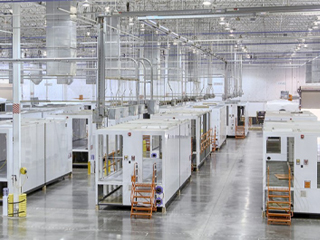Colocation providers of all sizes are under pressure to supply more than just data center space. What are their reactions to this and how are they shaping their hybrid cloud strategies?
The shift by many businesses to hybrid cloud architectures has thrown the colocation market into disarray. Colocation providers are under increasing pressure in an era when workloads traverse public cloud environments and colocation facilities.
Small co-locaters are reacting to the expansion of the hybrid cloud in a different way than large colocation providers. When it comes to the hybrid cloud market, they also face a variety of pressures.
This article examines the different responses of colocation providers to hybrid cloud.
The Growing Demand for Colocated Hybrid Cloud
These solutions are anticipated to grow more for two reasons in the future. One is the growing popularity of the multi-cloud and hybrid cloud. Hybrid architectures demand will increase. This is due to the public cloud companies who continue to create their own hybrid cloud frameworks.
The second is that, unlike services that have not yet moved to the cloud, hybrid cloud services can help colo providers reclaim business from companies that have already moved to the public cloud. This is especially true when firms “repatriate” their cloud workloads due to cost pressures and compliance issues. If colo providers can make it simple to repatriate those workloads to a colocated hybrid cloud instead of on-premises, they will win the cloud repatriation race.
Hybrid Cloud’s Impact on Colocation

Photo Credit: blog.equinix.com
There’s a lot to say about how the hybrid cloud is influencing the colocation business. Colocation providers are under increasing pressure to supply more than data center real estate. Modern enterprises adopt hybrid cloud architectures that mix workloads housed in public clouds with those running inside colocation facilities.
Businesses may choose to migrate their workloads to the public cloud if data center space is the only thing colos can provide. This is especially true in circumstances when enterprises manage their IT estates using hybrid cloud frameworks like AWS Outposts or Azure Stack. These frameworks make it very easy to migrate workloads out of data centers and into the public cloud without having to reconfigure services or even change management tooling because they extend public cloud services into private data centers.
That is the fundamental problem that all colos face. Let’s take a look at how huge and tiny colos are reacting now.
Big Colos and Hybrid Cloud
For big colos, global data center networks appear to be a key component of the answer to hybrid cloud demands.
That makes sense, especially in an age where edge computing is in vogue. Whereas the big public clouds offer a handful of data centers in most major regions. Some large colocation providers may offer dozens of data centers in each country. What’s more, colocation facilities tend to be closer to large population centers than public cloud data centers. If you need to cut latency down to mere milliseconds or set up redundant hosting in different local areas, colocation offers an advantage that the public cloud alone can’t deliver.
The large colos have also invested in interconnect services targeted at hybrid workloads. CyrusOne and Digital Realty share the same sentiments, “interconnection is foundational” for the company’s hybrid cloud strategy.
The large colos can afford high-performance interconnect services and provide a level of connectivity that at least matches. if not exceeds, the direct-connect services from public cloud providers.
Small Colos and Hybrid Cloud
Small colocation providers – those that operate a relatively small number of data centers, usually within just one or two regions – are managing the hybrid cloud challenge in a different way.
That makes sense, especially in this day and age of edge computing. Large colocation providers may offer dozens of data centers in each country, but larger public clouds only offer a few in most key countries. Furthermore, compared to public cloud data centers, colocation facilities are typically closer to major population centers. If you need to reduce latency to milliseconds or set up redundant hosting in multiple locations, colocation provides a benefit that the public cloud alone cannot provide.
Small colos may, on the other hand, be able to profit from a hyperlocal presence that neither public cloud providers nor large colos can match. A regional colo with numerous data centers in the same city can put workloads very near to end-users – assuming that those end users are also in that city. Large colos with only one data center in a given city, as well as public cloud providers with data centers across the state, are unable to compete in this regard.
The fact that not all customers require managed services or hyperlocal data centers is a major barrier for tiny colos. Large corporations may want to handle their workloads in-house, and businesses with a worldwide user base will be unconcerned by having multiple data centers in the same region.
AKCP Monitoring for Colocation
Monitoring is an often-neglected part of the overall collocation strategy. Basic data center monitoring takes very much effort to set up, and it can be a life-saver when the chips are down. Make sure that your chosen data center collocation provider has a strong monitoring system to ensure efficiency in operation. You’ll need a system that gathers and analyses system logs from your devices to receive and forward the traffic of the servers. AKCP has a data center monitoring solution to gather logs from many different devices, store them in one place, and provide analysis tools. AKCP monitoring can be implemented at many levels. Here are some:
A data center is not a simple public facility where anyone could be granted access. No matter if it is your own facilities or in a collocation, you should make sure to have the highest level of security. Unauthorized entry can be prevented with CCTV, surveillance guards, RFID security card-based access to internal facilities, and alarms. You can also have remote monitoring access to these various security means.
A proper data center should be set up with different types of sensors to monitor the temperature, humidity, and water, power level. These monitoring systems are installed to keeping track of every environmental variable within their data center. A monitoring system gives a precise notification which might be useful for the technical team to be aware of harmful issues. Thus, implement preventative measures necessary. Proper utilization of these environmental monitoring tools will allow the data center provider to see which system is using which resources, this is what helps them to maintain their optimal performance.
AKCP Rack+ Wireless Solution

Wireless Rack+ Monitoring
Using AKCP Wireless Tunnel LoRa radio technology the AKCP Rack+ Wireless Sensors can be rapidly deployed, have no cabling, and are easy to expand without the need for additional sensor ports and base units. Save on IP addresses and rack space. Sensors send their data to an AKCP LoRa gateway such as the L-DCIM. Secure and independent private LoRa network for monitoring all your cabinets.
Conclusion
In short, while both large and small colos are under pressure from hybrid cloud adoption, they are approaching the problem differently. The answer to hybrid cloud for large colos appears to be giving as many data center and connectivity alternatives as feasible. Managed services and hyperlocal infrastructure are critical for tiny colos.
Reference Links:
https://www.datacenterknowledge.com/colocation/colocation-provider-size-shapes-hybrid-cloud-strategies
https://www.align.com/blog/differences-between-private-public-colocation-hybrid-clouds
https://www.coresite.com/blog/hybrid-cloud-and-colocation







